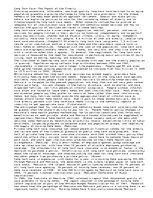-
Impact of Long-Term Care and the Elderly
Providing accessible, affordable, and high-quality long-term care services to an aging population presents a growing challenge to long-term care providers. As the oldest members of the baby boom generation approach retirement, federal and state policy, makers are exploring policies to care for the increasing number of elderly and to finance expanding long-term care needs. Other concerns include how to provide an adequate mix of institutional care and home and community-based services and how to monitor the quality of services delivered in these settings.
Long term care refers to a wide range of supportive, medical, personal, and social services for people limited in their ability to function independently and to perform every day activities, whether due to chronic illness, injury, or aging. (Campbell) Currently, more than 12 million people, 6.6 million of whom are elderly, receive long-term care assistance. (Campbell) Of elderly long-term care recipients, 1.5 million reside in an institution such as a nursing home and the remainders receive care in their homes or communities. Compared with the rest of the population, long-term care users are disproportionately female, low income, and very old, and they live alone or with a relative other than a spouse. In general, the requirement for long-term care service is measured by the need for assistance in performing basic activities of daily living, such as eating, bathing, and dressing. (Stone)
…


